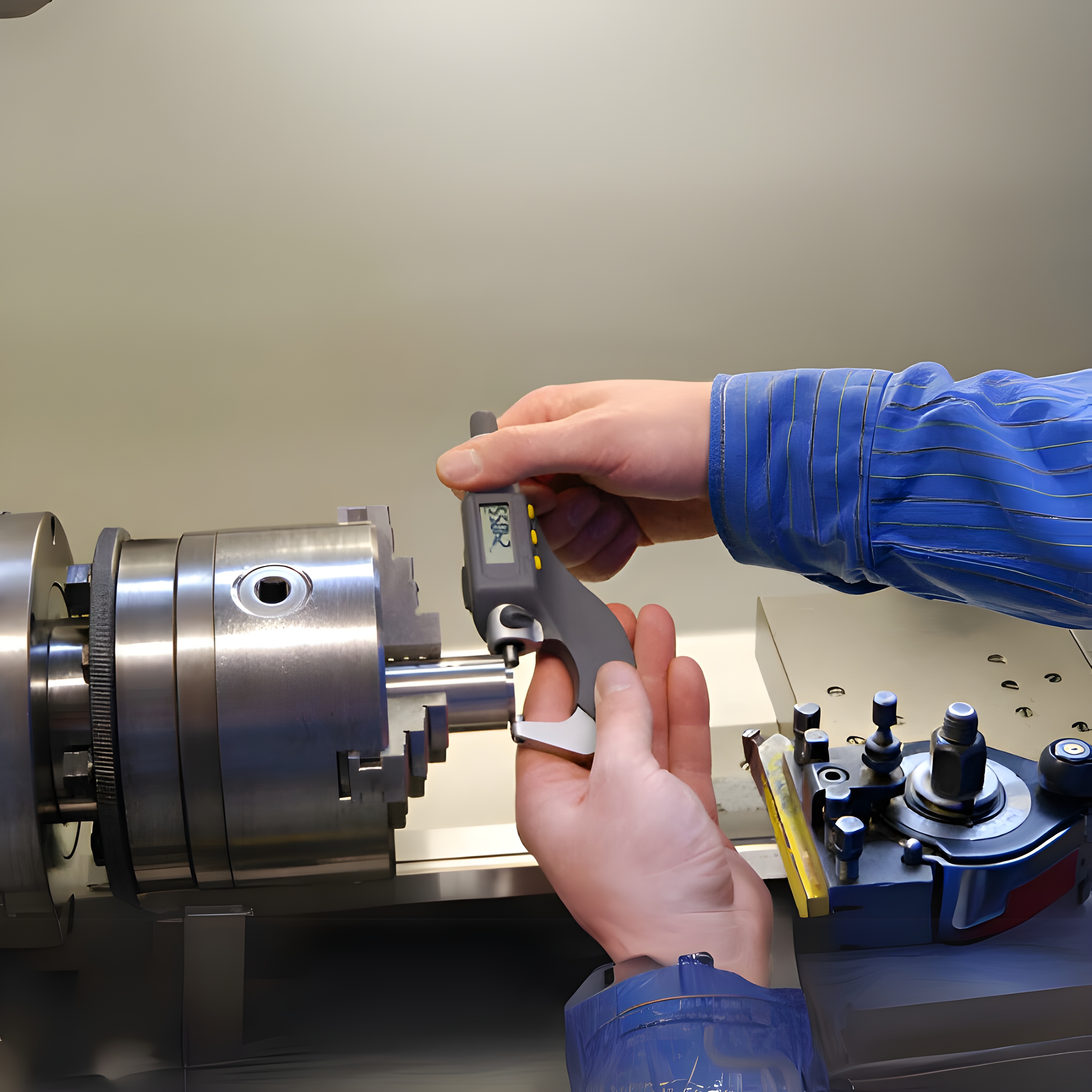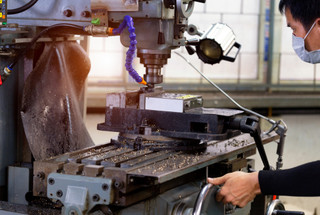Must-Have Measuring Instruments for CNC Machining and Metalworking
Must-Have Measuring Instruments for CNC Machining and Metalworking
Precision and CNC machining and metalwork are two sides of the same coin - they complement each other.
One wrong measurement can risk the entire project by a few millimeters or inches. So, precise measurement tools are non-negotiable whether you’re working on custom parts or running a small production unit.
Therefore, this blog will explore essential instruments, practical tips, and maintenance habits to keep everything in shape. So, continue reading as we understand more about the role of measuring instruments in CNC and metalworking.
Continue reading as we explore everything about it. No frills, just the stuff that works.
Must-Have Measuring Instruments for CNC Machining and Metalworking
1. Calipers – The Daily Driver
Calipers are the go-to tool most machinists use multiple times a day. They are the most common option for various tasks, from measuring outside and inside diameters to depth checks and step dimensions. Known as the daily driver, calipers are versatile and cover a lot of ground.
Recommended Tool: Fowler Ultra-Cal IV Electronic Caliper
What Makes A Great Alternative?
- Clear digital readout that eliminates second-guessing.
- Rugged stainless steel body holds up in shop conditions.
- Switches between absolute and incremental modes without hassle.
Digital calipers are an excellent option for quick checks, installations, and parts verification. They’re easy to take measurements from, highly accurate, and perform most jobs smoothly with accuracy.
2. Micrometers – The Accuracy Upgrade
You cannot afford to work with calipers when dealing with high-level tolerances. That’s where micrometers provide that next level of detail, especially for critical measurements like wall thicknesses, shaft diameters, and bearing fits.
Recommended Tool: Mitutoyo Outside Micrometer
Why It’s Reliable:
- Ratchet stop ensures consistent measuring pressure.
- Carbide measuring faces resist wear over time.
- Precise, engraved graduations for sharp readings.
Micrometers deliver precise measurements down to the thousandth or hundredth of a millimeter. They're a great option for accurate results, not just close measurements.
3. Dial Indicators – Visualizing the Small Stuff
Dial indicators give a visual read on the tiniest deviations when checking for runout, part alignment, or surface flatness. They're often used with magnetic bases for setup tasks and inspections.
Recommended Tool: Federal Dial Indicator
Standout Features:
- High sensitivity to detect minute shifts.
- Durable casing for rough environments.
- Easy-to-read dial face that holds position well.
A must-have for machine setup, lathe work, and precise surface evaluations.
4. Height Gauges – For Vertical Accuracy
Height gauges are essential for measuring part heights, hole positions, and marking reference lines. They offer vertical precision that’s hard to match with handheld tools.
Recommended Tool: Mahr Digimar 816 CL
Key Benefits:
- Digital display enhances clarity and repeatability.
- Solid granite base keeps the gauge stable.
- Perfect for consistent inspection routines.
Height gauges bridge the gap between layout tools and inspection equipment, making them valuable in manual and CNC environments.
5. Gauge Blocks – The Foundation of Accuracy
Also called Jo blocks, gauge blocks are used for tool calibration, machine setup, and verifying other instruments. They are the standard that all other tools reference.
Recommended Tool: Mitutoyo Grade AS-1 Steel Set
Why They're a Staple:
- Ultra-flat, mirror-finished surfaces.
- Minimal wear, even with frequent use.
- Delivered with a calibration certificate.
Gauge blocks belong in any setup that demands consistency and confidence in measurements.
6. Feeler Gauges – Small Gaps, Big Difference
Feeler gauges measure small clearances and gaps, which are critical for checking valve lash, tool offsets, and part separation.
Recommended Tool: Starrett Thickness Gage Set
Key Advantages:
- Wide selection of thicknesses.
- Durable steel with smooth edges.
- Fold-up holder for quick access.
Simple, reliable, and incredibly useful for fine-tuning mechanical setups.
7. Protractors & Angle Finders – Nailing the Angles
Angle finders and digital protractors are handy for accurate angle setups, layout work, and double-checking miters or compound cuts.
Recommended Tool: SPI Digital Protractor
What Makes It Effective:
- Bright digital readout with quick response.
- The magnetic base offers steady positioning.
- Compact design fits easily in tight spaces.
Especially useful in fixture design and multi-axis setups.
8. Surface Plates – Flatness as a Baseline
Every precision shop needs a reliable reference plane. Granite surface plates provide a dead-flat base for setups, comparisons, and inspections.
Recommended Tool: Starrett Granite Surface Plate
Why It’s Indispensable:
- Non-magnetic, wear-resistant granite.
- Stays stable under temperature changes.
- Comes in a variety of sizes.
Paired with height gauges or dial indicators, a surface plate becomes the base for precise work.
9. Touch Probes – CNC’s Smart Tool
Touch probes are CNC machine accessories that help locate parts, set offsets, and automate measuring. They cut setup time and increase repeatability.
Recommended Tool: Renishaw Touch Probe Systems
Why It Works:
- High precision, even on complex parts.
- Integrates easily with modern CNC machines.
- Speeds up setup and inspection cycles.
A game-changer in tight-tolerance production and multi-part workflows.
Tool Maintenance Tips to Preserve Accuracy
Precision tools only stay precise if they’re treated right. Regular maintenance prevents drift, damage, and downtime. Here’s what keeps things dialed in:
- Clean before and after each use: Wipe with a lint-free cloth. For buildup, use a mild solvent that won’t harm tool surfaces.
- Store in padded cases: Keeps tools safe from moisture, impact, and scratches. Avoid tossing them loose in drawers.
- Calibrate regularly: Use gauge blocks or standards to confirm accuracy. Keep a schedule and log.
- Handle with care: Don’t overtighten micrometers. Don’t drop calipers. Even minor impacts affect readings.
- Avoid harsh conditions: High heat, humidity, and magnetic fields can skew tool accuracy over time.
- Protect moving parts: Retract jaws and spindles before storage. Lightly oil if not in use for long periods.
Pro Tips for Getting the Most From Your Instruments
- Zero before each session: Always check and reset your tools to zero before starting.
- Use consistent pressure: Especially with micrometers—let the ratchet or friction stop do the work.
- Log tool performance: Keep a basic log for calibration dates, drops, or unusual readings.
- Buy right the first time: Investing in quality will save you time and hassle down the road. Stick to trusted brands.
Final Thoughts
Having the right measuring tools isn’t about showing off a well-stocked bench—it’s about getting results that hold up. Whether calibrating a CNC machine, checking dimensions, or laying out your next job, accuracy builds confidence.
Penn Tool Co. carries professional-grade instruments for shops that demand reliability. With a few essentials and good habits, the path to tighter tolerances becomes much easier.
Let accuracy be the standard—every time.





